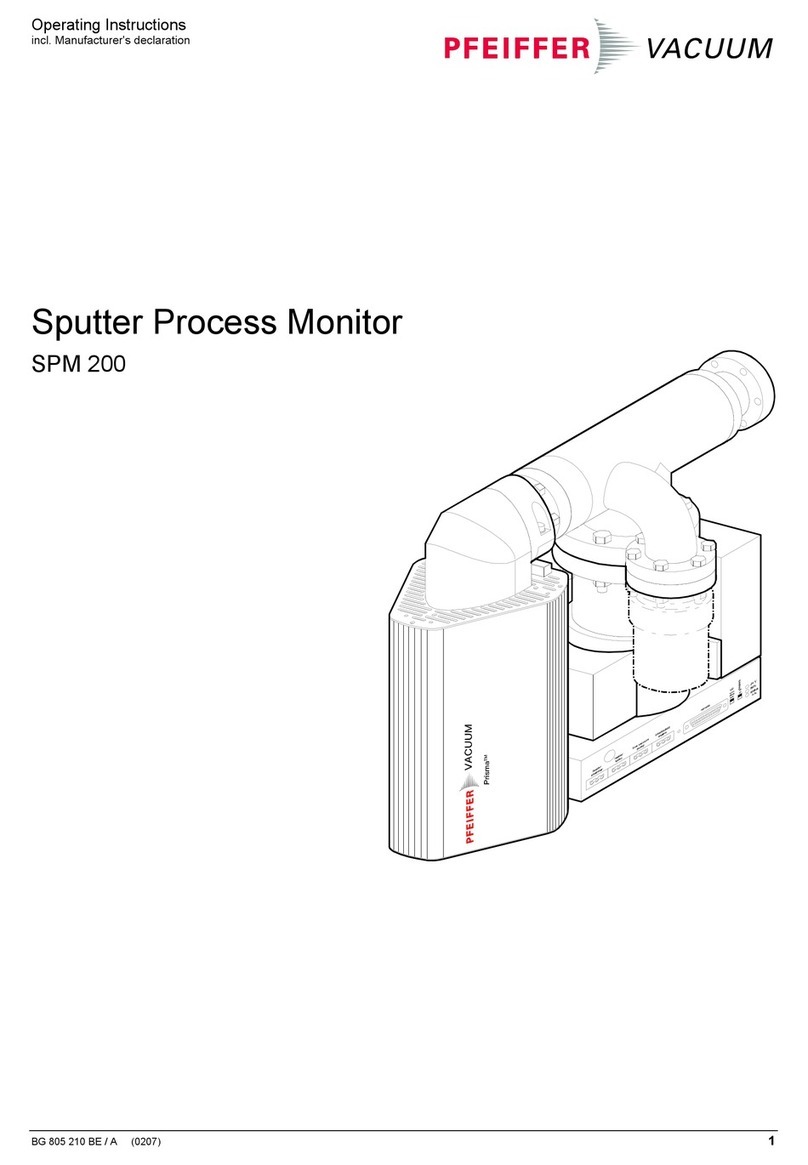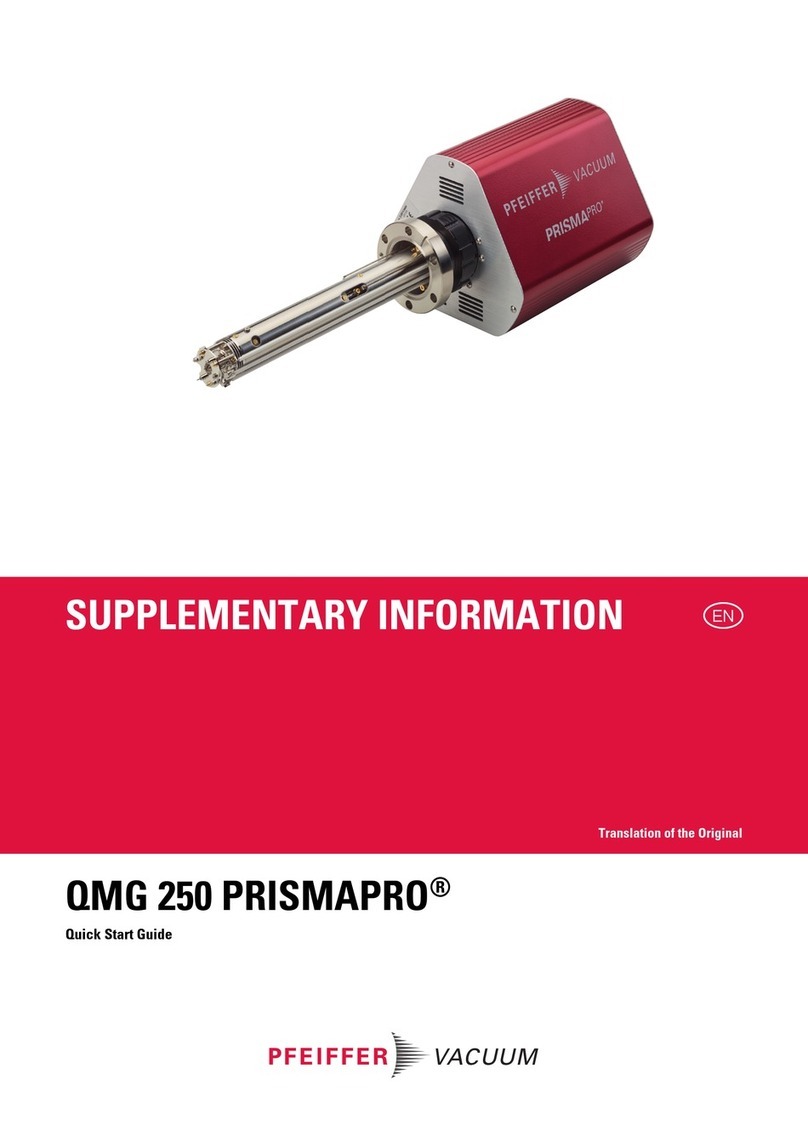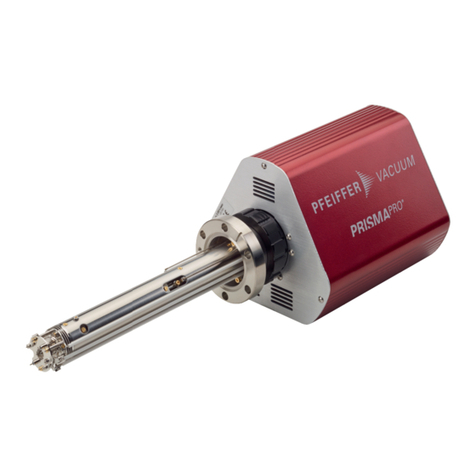
List of figures
Fig. 1: Position of the stickers on the product 10
Fig. 2: Main components of the PrismaPro 19
Fig. 3: System overview 20
Fig. 4: Analyzers with transport protection 20
Fig. 5: Components of the analyzer QMA 250 with open ion source 21
Fig. 6: QME 250 front panel: left standard, right with IO 250 22
Fig. 7: PV MassSpec 22
Fig. 8: View on the mains part plug 23
Fig. 9: Ethernet connection 23
Fig. 10: AUX I/O, 15-pin D-Sub socket 23
Fig. 11: EXT I/O, 62-pin HD D-Sub socket 24
Fig. 12: Connection example: Digital output EXT I/O 25
Fig. 13: Connection example: Digital input AUX I/O and EXT I/O 26
Fig. 14: TP GAUGE, 6-pin Amphenol C 091 A socket 26
Fig. 15: Principle of the quadrupole mass spectrometer system 27
Fig. 16: Fastening and grounding of analyzer 32
Fig. 17: Mounting aid and transport protection 32
Fig. 18: Desktop shortcut 38
Fig. 19: Excerpt of an exemplary a test report 44
Fig. 20: Ion source with open ion source as an example 45
Fig. 21: Connections of the filament and the ion source with clamps 46
Fig. 22: High-frequency connections of the quadrupole mass filter 46
Fig. 23: Disassembling the filament unit of the open ion source 49
Fig. 24: Installing the filament unit of the open ion source 49
Fig. 25: Filament unit of the crossbeam ion source 50
Fig. 26: Support spring on the analyzer with crossbeam ion source 51
Fig. 27: Filament unit of the grid ion source 52
Fig. 28: Replacing the open ion source 54
Fig. 29: Replacing the cross beam ion source 55
Fig. 30: Support spring on the analyzer with crossbeam ion source 55
Fig. 31: Replacing the grid ion source 57
Fig. 32: Warning message with security prompt 59
Fig. 33: New high frequency/reverse polarity 59
Fig. 34: Contacts on QMA 250 and QME 250 67
Fig. 35: Dimensions QMG 250 F / open IS / straight QME 250 79
Fig. 36: Dimensions QMG 250 M / open IS / straight QME 250 80
Fig. 37: Dimensions QMG 250 M / crossbeam IS / straight QME 250 80
Fig. 38: Dimensions QMG 250 M / grid IS / straight QME 250 80
Fig. 39: Dimensions QMG 250 F / open IS / 90° QME 250 81
Fig. 40: Dimensions QMG 250 M / open IS / 90° QME 250 81
Fig. 41: Dimensions QMG 250 M / crossbeam IS / 90° QME 250 82
Fig. 42: Dimensions QMG 250 M / grid IS / 90° QME 250 82
List of figures
7/86




































